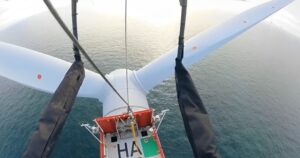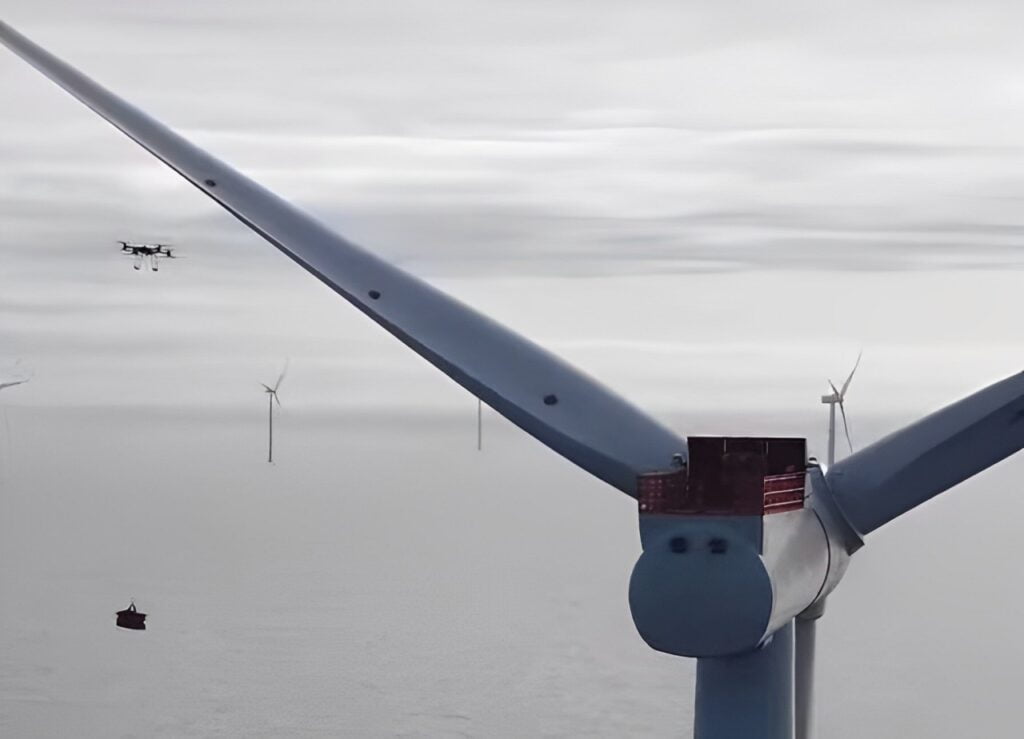ButSpeak.com
News which Matters.

Orsted deploys heavy-lift cargo drones at the Borssele 1 & 2 offshore wind farm in the Netherlands, significantly improving operational efficiency, safety, and reducing carbon emissions.
Danish renewable energy leader Orsted is setting a new standard in offshore wind farm operations by deploying heavy-lift cargo drones at the Borssele 1 & 2 offshore wind farm in the Netherlands. This marks the first time such drones are being used in an actual operational campaign, following successful trials at the UK’s Hornsea 1 offshore wind farm last year.
The Borssele 1 & 2 offshore wind farm, with a capacity of 752 megawatts (MW), is benefiting from the introduction of 70 kg (154-pound) drones, boasting an impressive wingspan of 2.6 meters (8.5 feet). These drones are capable of transporting cargo weighing up to 100 kg (220 pounds) directly from an offshore supply vessel to the top of each wind turbine’s nacelle.

Traditionally, maintaining and updating equipment in offshore wind turbines is a time-consuming process, involving a vessel sailing from one turbine to the next, lifting cargo using cranes. However, Orsted’s innovative approach with heavy-lift drones has significantly reduced the time required for these tasks. The drone flights take just four minutes per turbine, compared to the conventional method, which can take up to six hours. This efficiency means that Orsted can complete operations at Borssele 10-15 times faster than before.
Beyond just time savings, the use of heavy-lift drones offers numerous additional benefits. By reducing the need for extensive vessel transport and multiple ship journeys, Orsted is not only cutting costs but also lowering carbon emissions, contributing to its broader sustainability goals. Moreover, the drones enhance operational safety by reducing the risk to personnel, who would otherwise have to be involved in more hazardous ship-to-turbine transfers. Additionally, because the turbines do not need to be shut down during cargo delivery, the overall efficiency of the wind farm is further optimized.
This deployment of heavy-lift cargo drones represents a significant leap forward in offshore wind farm operations, highlighting Orsted’s commitment to innovation and sustainability. As the global demand for renewable energy continues to grow, such advancements will play a crucial role in making wind energy even more efficient and sustainable.